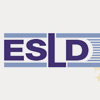Conferencies Summaries
Summaries & scientific literature updates
Part A.
- Laser Therapy for Extra Facial PWS
Cretu S., et al.(Salavastru C.) – Romania
This is a retrospective analysis of 5 cases of difficult to treat PWS located in acral areas. They were treated with LP Nd:YAG laser for vascular nodules, PDL for the rest of lesions surface, and additional tacrolimus 0.1% ointment in 2 cases. The settings used were, for the LP Nd :YAG : 10-40 ms, 3 to 7 mm spot diameter, 120-140 J/cm² ; for the PDL 595 nm : 0.45-3 ms, 7 mm (7.25-10 J/cm²), 10 mm (5-12 J/cm²) or 3x10 mm (10-14 J/cm²) spot size.
Clearance of vascular nodules was obtained after an average of 4 sessions. More than 50% clearance was achieved after an average of 8 sessions for the rest of the lesions. No scarring was observed. Hyperpigmentation (lower limbs) was treated with depigmenting agents and PDL laser: 10mm spot size, 6J/cm², 7 mm, 7.5J/cm² with good results. Difficult to treat PWS located in acral areas, where the stratum corneum is thicker compared to the face, tend to have a pink or purple colour. Some authors have found that in distal extremities vessels are placed more deeply. In this trial, authors obtained good results without side-effects. Associated treatments with Tacrolimus ointment 0.1%.might inhibite angiogenesis and hence may prevent formation of new vessels.
- Treatment of Atrophic Scars with RF Microneedles
Badawi A. – Canada
The importance of electric potential on cells functioning is well established for wounds, in particular the increase of a negative electric potential increases cell healing capacity through various control signals. The microneedling , as a part of the '' pro-healing '' technics changes the electrical potential and cells regeneration ability but also increases local blood flow with intake of cellular nutrients and growth factors and stimulates inflammation with cytokine and fibroblast response. Beware of dermarollers, all are not equivalent and the tips become deteriorate and bend quickly. There are also motorized rollers as alternative.
For clinical results you can expect tightened pores, decrease in depth of scars and rejuvenation. Finally fractional RF with non isolated needles (epidermal and dermal heating) or isolated (dermal heating only) are also “pro-healing” ... but thermal effects long term fibroblast stimulation should be taken into consideration (3-6 months). Clinical case results: appears to be convincing on acne scars and stretch marks.
References :
- Hantasch et al. Bipolar fractional radiofrequency treatment induces neoelastogenesis and neocollagenesis. Lasers Surg Med. 2009 Jan;41(1):1-9
- Seo KY et al. Skin rejuvenation by microneedle fractional radiofrequency and a human stem cell conditioned medium in Asian skin: a randomized controlled investigator blinded split-face study. J Cosmet Laser Ther. 2013 Feb;15(1):25-33
- Treatment of Acute and Chronic radiodermatitis
Laubach HJ – Switzerland
• Acute Radiodermatitis. Prevention
1. Class III topical corticosteroids applied 1 time per day (mometasone, bethametasone, methylprednisolone 0.1%) are more effective than the simple emollients and reduce incidence of Grade II acute radiation dermatitis.
Reference: - Boström A. et al, Potent corticosteroid cream (mometasone furoate) Significantly Reduces acute radiation dermatitis: results from a double blind, randomized study . Radiother Oncol. 2001 Jun; 59 (3): 257-65
2. LLLT
Laser diode: 2 times a week together with radiation therapy, can reduce acute, grade II radiodermatitis from 29% in the control group to 3% in the treatment group (p = 0.001)
Reference: Oral lecture: Jeroen Mebis, Multinational Association of Supportive Care in Cancer (MASCC) Annual Meeting. Presented June 25, 2015
Also another clincal trial is currently on its way using LED 660 nm within 52 patients, 5 times a week, and applied just before the radiation treatment versus placebo. Results to be expected in 2016/17.
Reference:
Costa MM, 660 nm Phototherapy for the prevention of breast cancer radiodermatitis in patients receiving send radiation therapy: study protocol for a randomized controlled trial; Trials. 2014 Aug 20; 15: 330. doi: 10.1186 / 1745-6215-15-330
• Chronic radiodermatitis-Treatment
Clinical signs: Telangiectasia, dyspigmentation, disappearance of skin appendages, subcutaneous atrophy, subcutaneous fibrosis, ulceration, increased risk of secondary carcinoma.
- Importance of fractional radiatiotherapy
- Place of lasers and DBE:
*Telangiectasia: PDL and IPL * Fibrosis "morphea and chronic lichen - like" PDL (action is TGF) NAFL, AFL (TGF modulation again)
Reference:
Kineston D, Kwan JM, Uebelhoer NS, PR Shumaker. Use of a fractional ablative 10.6-microns carbon dioxide laser in the treatment of a morphea-related contracture. Arch Dermatol. 2011; 147 (10): 1148-1150
And much more!
Want to read more? download the full article : click here & Join the ESLD!
Join the ESLD and become an active member of our organization.
Information, videos, tutorials, discussion, events... and much more!

